Themed collection Most popular 2023 energy & environmental chemistry articles

A breath of sunshine: oxygenic photosynthesis by functional molecular architectures
Water oxidation liberating dioxygen under visible light irradiation poses a formidable challenge to natural and artificial photosystems. The quest for the “green shift” represents a major goal to enhance the overall photosynthetic performance by tailoring molecular architectures.
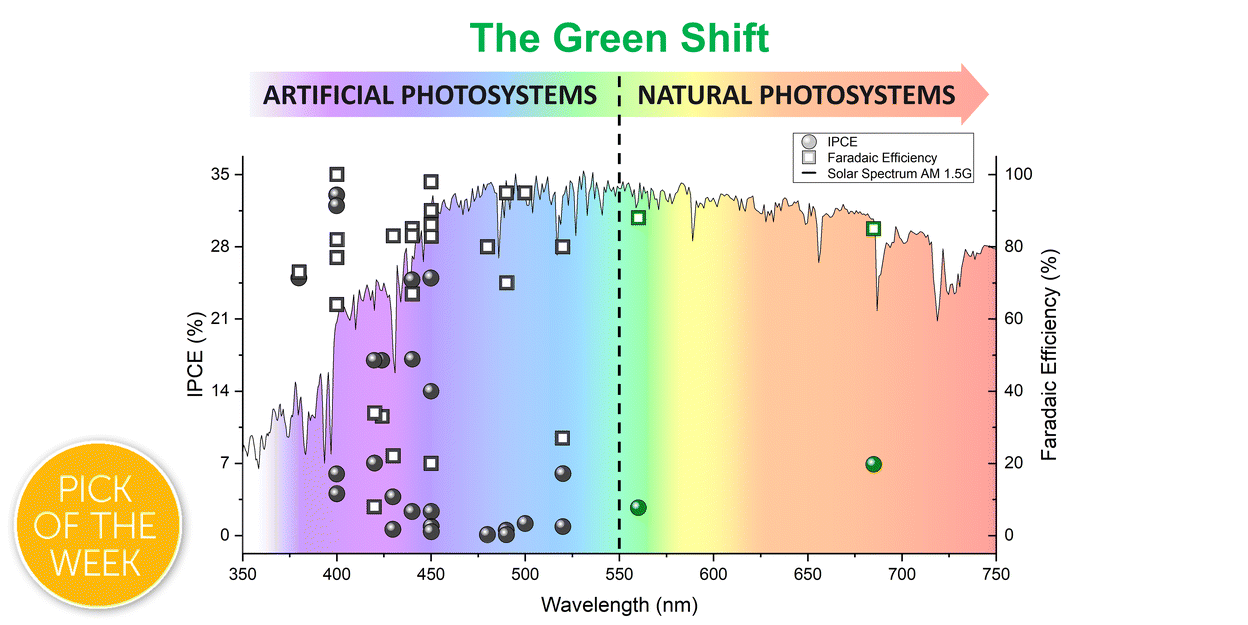
Chem. Sci., 2023,14, 12402-12429
https://doi.org/10.1039/D3SC03780K
Layered transition metal oxides (LTMO) for oxygen evolution reactions and aqueous Li-ion batteries
Schematic illustration of layered transition metal oxide applicating in dual purpose as oxygen evolution reaction electrocatalyst and aqueous Li-ion batteries cathode.

Chem. Sci., 2023,14, 10644-10663
https://doi.org/10.1039/D3SC03220E
Transition-metal (oxy)nitride photocatalysts for water splitting
This perspective highlights recent advances and challenges in transition-metal (oxy)nitrides, which are promising photocatalysts for overall water splitting, and discusses opportunities to upgrade the solar-to-hydrogen energy conversion efficiency.

Chem. Sci., 2023,14, 9248-9257
https://doi.org/10.1039/D3SC03198E
Insights into alloy/oxide or hydroxide interfaces in Ni–Mo-based electrocatalysts for hydrogen evolution under alkaline conditions
The activity of Ni–Mo catalysts for the hydrogen evolution reaction originates from the interfaces of alloy–oxide or alloy–hydroxide, in which the oxide or hydroxide promotes water dissociation and the alloy accelerates hydrogen combination.

Chem. Sci., 2023,14, 3400-3414
https://doi.org/10.1039/D2SC06298D
Advances in CO2 activation by frustrated Lewis pairs: from stoichiometric to catalytic reactions
Frustrated Lewis pair systems have been explored efficiently in homogeneous and heterogeneous conditions for the activation and reduction of CO2 to various useful products in stoichiometric as well as in catalytic reactions.

Chem. Sci., 2023,14, 13661-13695
https://doi.org/10.1039/D3SC03907B
Recent advances in the utilization of covalent organic frameworks (COFs) as electrode materials for supercapacitors
This review summarizes the recent advances in the electrode application of covalent organic frameworks (COFs) for supercapacitors, including the design strategies from the molecular scale to morphology control level and their device performance.
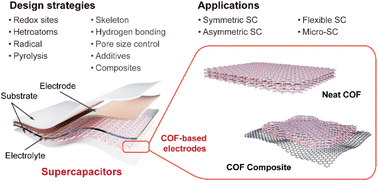
Chem. Sci., 2023,14, 13601-13628
https://doi.org/10.1039/D3SC04571D
Liquid electrolyte chemistries for solid electrolyte interphase construction on silicon and lithium-metal anodes
This review comprehensively summarizes the key features of existing liquid electrolyte formulations for Si and Li metal anodes and proposes design rules for advanced liquid electrolyte chemistry.
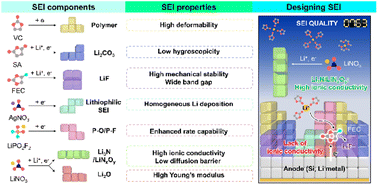
Chem. Sci., 2023,14, 9996-10024
https://doi.org/10.1039/D3SC03514J
Halide solid-state electrolytes for all-solid-state batteries: structural design, synthesis, environmental stability, interface optimization and challenges
The design principle and synthesis method of halide solid-state electrolytes are discussed in detail. Interface optimization of halide solid-state electrolytes and their applications in all-solid-state batteries are described.
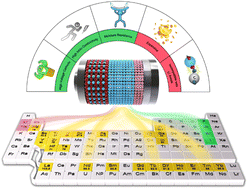
Chem. Sci., 2023,14, 8693-8722
https://doi.org/10.1039/D3SC02093B
Impact of electrolyte impurities and SEI composition on battery safety
Our work highlights the impact of impurities and SEI properties on Li-ion battery safety. We could show that a thicker, inorganic SEI leads to a significant delay in thermal runaway, indicating a safer aged battery.

Chem. Sci., 2023,14, 13783-13798
https://doi.org/10.1039/D3SC04186G
Data science enabled discovery of a highly soluble 2,2′-bipyrimidine anolyte for application in a flow battery
Non-linear threshold analysis enabled discovery of a highly soluble (1.3 M) bipyrimidine anolyte. Stable cycling in a full flow battery cell for 75 cycles.

Chem. Sci., 2023,14, 13734-13742
https://doi.org/10.1039/D3SC04084D
Enhancing organic cathodes of aqueous zinc-ion batteries via utilizing steric hindrance and electron cloud equalization
Polyaniline (PANI), with merits of high electronic conductivity and capacity, is a promising material for zinc (Zn)-ion batteries.
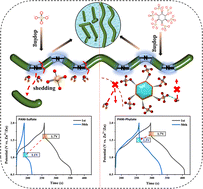
Chem. Sci., 2023,14, 12589-12597
https://doi.org/10.1039/D3SC04766K
In situ detection of reactive oxygen species spontaneously generated on lead acid battery anodes: a pathway for degradation and self-discharge at open circuit
Prospects for refurbishing and recycling energy storage technologies such as lead acid batteries (LABs) prompt a better understanding of their failure mechanisms.

Chem. Sci., 2023,14, 12292-12298
https://doi.org/10.1039/D3SC04736A
Ion sieving membrane for direct seawater anti-precipitation hydrogen evolution reaction electrode
A positive charged Ni(OH)2 ion sieving membrane is in situ grown on 3D nickel foam based seawater HER electrode to dramatically reduce hydroxide-based precipitation on the electrode surface via hindering the transfer of Mg2+ ion.

Chem. Sci., 2023,14, 11830-11839
https://doi.org/10.1039/D3SC04532C
Visible light activated energy storage in solid-state Azo-BF2 switches
Visible-light-absorbing photoswitches based on the Azo-BF2 scaffold show reversible isomerization in the solid state, storing photon energy and releasing thermal energy on demand.

Chem. Sci., 2023,14, 11359-11364
https://doi.org/10.1039/D3SC03465H
Electrochemical intercalation of rubidium into graphite, hard carbon, and soft carbon
The electrochemical intercalation of Rb into graphite and low-crystalline carbons was demonstrated. It was confirmed that stage-1 RbC8 was formed in the low-potential region close to the Rb plating potential (Rb+/Rb) in non-aqueous electrolytes.

Chem. Sci., 2023,14, 11056-11066
https://doi.org/10.1039/D3SC03281G
A host potassiophilicity strategy for unprecedentedly stable and safe K metal batteries
The design of a potassiophilicity strategy for an oxygen-modified carbon cloth regulates interface electrons and enables strong binding of K adatoms through orbital hybridization, resulting in unprecedentedly stable and safe K metal batteries.

Chem. Sci., 2023,14, 9114-9122
https://doi.org/10.1039/D3SC03203E
Engineering hydrophobic–aerophilic interfaces to boost N2 diffusion and reduction through functionalization of fluorine in second coordination spheres
We engineered a catalyst via functionalization of fluorine in copper phthalocyanine grafted with graphene that forms a three-phase interface. This concept helps to suppress the parasitic HER process significantly with a high F.E. of NRR (49.3%).

Chem. Sci., 2023,14, 8936-8945
https://doi.org/10.1039/D3SC03002D
“Mn-locking” effect by anionic coordination manipulation stabilizing Mn-rich phosphate cathodes
Our study introduced light-weight fluorine into Mn-rich cathode to trigger a “Mn-locking” effect: more robust Mn ligand framework, suppressed Mn dissolution, improved structural stability and enhanced electronic conductivity.

Chem. Sci., 2023,14, 8662-8671
https://doi.org/10.1039/D3SC03095D
Composite polymer electrolytes with ionic liquid grafted-Laponite for dendrite-free all-solid-state lithium metal batteries
A composite polymer electrolyte with ionic liquid grafted-LAP exhibits high conductivity and mechanical strength, contributing to dendrite-free all-solid-state lithium metal batteries.

Chem. Sci., 2023,14, 7956-7965
https://doi.org/10.1039/D3SC01647A
PET recycling under mild conditions via substituent-modulated intramolecular hydrolysis
A set of substituted binuclear zinc catalysts are employed to investigate the structure–activity relationship in PET hydrolysis, which leads to the identification of a new catalyst with four times more activity than the methyl-substituted one.

Chem. Sci., 2023,14, 6558-6563
https://doi.org/10.1039/D3SC01161E
Confinement of an alkaline environment for electrocatalytic CO2 reduction in acidic electrolytes
This paper describes the design of hollow-structured Ag@C electrocatalysts to adjust the local reaction environment for high-performance CO2RR in acidic media.

Chem. Sci., 2023,14, 5602-5607
https://doi.org/10.1039/D3SC01040F
A nickel-based metal–organic framework as a new cathode for chloride ion batteries with superior cycling stability
A Ni-MOF material [Ni(dpip)] with double 1D tubular channels was demonstrated as a new family of cathode materials for chloride ion batteries (CIBs), which exhibited an extremely low capacity decay of 0.026% per cycle over 500 cycles.

Chem. Sci., 2023,14, 5643-5649
https://doi.org/10.1039/D3SC01497E
Emerging indoor photovoltaics for self-powered and self-aware IoT towards sustainable energy management
IoT devices powered by copper electrolyte-based dye-sensitized photovoltaic cells as ambient light harvesters achieve 38% power conversion efficiency and incorporate a dynamic intelligent on-device energy management system.

Chem. Sci., 2023,14, 5350-5360
https://doi.org/10.1039/D3SC00659J
Photoelectrochemical water oxidation by a MOF/semiconductor composite
Herein, we report the development of a MOF-semiconductor composite film active for water oxidation at a thermodynamic underpotential.

Chem. Sci., 2023,14, 4672-4680
https://doi.org/10.1039/D2SC06361A
Catalytic tandem dehydrochlorination–hydrogenation of PVC towards valorisation of chlorinated plastic waste
Solvent-based tandem conversion of PVC to PE-like material using hydrogen as atom economic reagent.

Chem. Sci., 2023,14, 4401-4412
https://doi.org/10.1039/D3SC00945A
Room temperature design of Ce(IV)-MOFs: from photocatalytic HER and OER to overall water splitting under simulated sunlight irradiation
A new synthetic approach is reported to synthesize redox-active Ce(IV) MOFs at room temperature for efficient and reusable photo-induced overall water splitting.

Chem. Sci., 2023,14, 3451-3461
https://doi.org/10.1039/D2SC05161C
Bond modulation of MoSe2+x driving combined intercalation and conversion reactions for high-performance K cathodes
Bond regulation not only makes the interlayer spacing larger, but also gives MoSe2+x a double reaction mechanism combining intercalation and conversion reactions. Consequently, the capacity and energy density of MoSe2+x can be greatly improved.
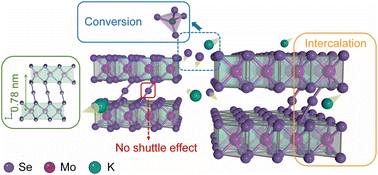
Chem. Sci., 2023,14, 2528-2536
https://doi.org/10.1039/D2SC07121E
Prolonged lifespan of initial-anode-free lithium-metal battery by pre-lithiation in Li-rich Li2Ni0.5Mn1.5O4 spinel cathode
Benefiting from highly reversible structure evolution of pre-lithiated Li-rich Li2Ni0.5Mn1.5O4 cathode, the corresponding anode-free pouch cell delivers a considerable energy density of 350 W h kg−1 and 97% capacity retention after 50 cycles.

Chem. Sci., 2023,14, 2183-2191
https://doi.org/10.1039/D2SC06772B
Germanium hydrides as an efficient hydrogen-storage material operated by an iron catalyst
Germanium hydride Ph2GeH2 can act as an efficient and reusable hydrogen-production/-storage material with the aid of iron catalysts. Hydrogen evolution from Ph2GeH2 as well as regeneration of Ph2GeH2 was realized at around room temperature.
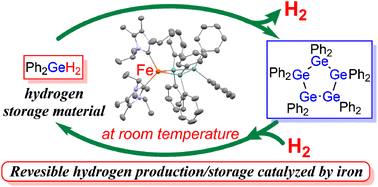
Chem. Sci., 2023,14, 1065-1071
https://doi.org/10.1039/D2SC06011F
A highly conductive gel electrolyte with favorable ion transfer channels for long-lived zinc–iodine batteries
The favorable channels of gel electrolyte enable rapid zinc ion transport for uniform Zn deposition via regulation of the solvation structure, thus efficiently enhancing battery performance.

Chem. Sci., 2023,14, 331-337
https://doi.org/10.1039/D2SC06035C
About this collection
This specially curated collection pulls together some of our most popular articles from 2023 in the fields of energy conversion and storage, sustainability, and environmental and green chemistry. The collection presents some outstanding contributions to the field, including advances in electrolyte and electrode materials for batteries, photocatalysts and electrocatalysts for water splitting, photovoltaics, CO2 reduction, and plastic valorisation. As with all Chemical Science articles, this collection is completely free to access and read. We hope you enjoy browsing through this collection!
If a particular article has inspired you, do feel free to share on social media using the buttons on each article landing page and use our hashtag: #ChemSciMostPopular